you will learn the phone information signal process with Matrix Laboratory application (MATLAB)
What Will you Learn?
You will learn the phone information signal process with Matrix Laboratory application (MATLAB)
Requirements
application matlab 2013/ code.
Difficulty
Intermediate
Tutorial Contents
Matrix Laboratory (MATLAB) is a program for analyzing and computing numerical data, Matrix Laboratory (MATLAB) is also an advanced programming language of mathematics, which is formed on the basis of thinking using the properties and forms of matrices.
Basically, analog signals are data signals in the form of continuous waves (continuous). The modulation technique for analogous information signals can be divided into three types based on the parameters of a sine wave. Each type of modulation has its weaknesses and advantages. There are three types of analog modulation that are often used in analog communication syntheses: Amplitude Modulation (AM) Frequency Modulation (FM), Phase Modulation (PM).
Amplitude Modulation (AM) signal is one of the modulation technique that modulation process of low frequency signal (information signal) at high frequency by comparing high frequency wave amplitude (carrier frequency) without comparing its frequency.
Step 1 : open the matlab application until the first page appears

link Download aplikasi Matrik laboratory (MATLAB): https://www.mathworks.com/products/matlab.html
the first page appears
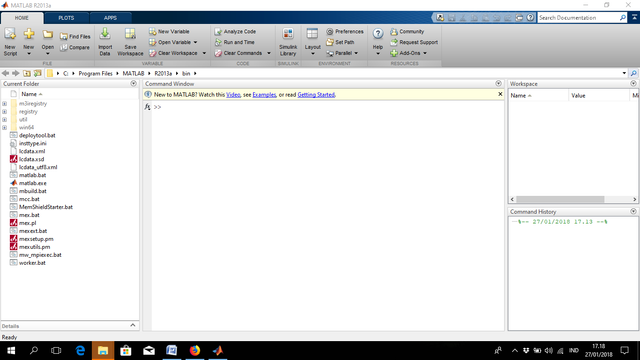
Step 2: klick the new Script
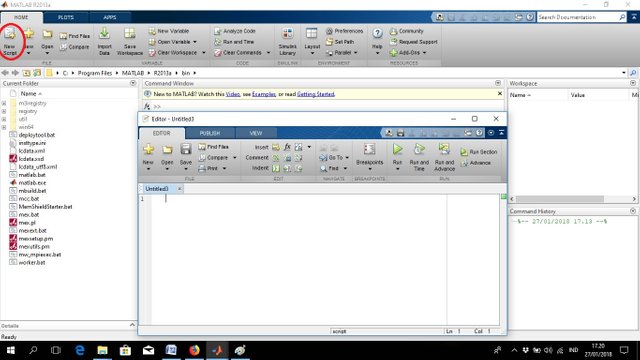
Step 3 :enter code on the new script
fi = 650;
fc = 130000000;
fs=2fc;
b = (fc-fi)/fi;
Ti = 1/fi;
t = 0:Ti/4444:6Ti;
t1 = 0:Ti/8888:0.1Ti;
m = sin(2pifit);
c = sin(2pifc*t);
figure(1) ;
subplot(2,1,1);
plot(t,m);
xlabel('Time');
ylabel('Amplitudo');
title('Sinyal Informasi');
grid on;
subplot(2,1,2);
plot(t,c);
xlabel('Time');
ylabel('Amplitudo');
title('Sinyal Carrier');
grid on;
%%
% sinyal noise dan termodulasi
figure(2) ;
x=randn(size(t));
n=awgn(x,5);
FM = sin(2pifc.t1 + bcos(2pifi.*t1));
subplot(2,1,1);
plot(t,n);
xlabel('Time');
ylabel('Amplitudo');
title('Sinyal Noise');
grid on;
subplot(2,1,2);
plot(t1,FM);
xlabel('Time');
ylabel('Amplitudo');
title('Sinyal Termodulasi FM');
grid on;
%%
% sinyal hasil penguatan dan penguatan dengan noise
figure(3) ;
amp = 5;
g = FM*amp;
x = randn(size(t1));
n = awgn(g,5);
h = n+x;
subplot(2,1,1);
plot(t1,g);
xlabel('Time');
ylabel('Amplitudo');
title('Sinyal Hasil Penguatan(penguatan =2)');
grid on;
subplot(2,1,2);
plot(t1,h);
xlabel('Time');
ylabel('Amplitudo');
title('Sinyal Hasil Penguatan + Noise');
grid on;
%%
% sinyal terfilter dan terdemodulasi
figure(4) ;
Y=fft(g);
fvtool(Y,1);
xlabel('Frekuensi' )
ylabel('Time');
title('FFT');
grid on;
results:Hasilnya:
signal information and carrier signal

signal strengthening and signal strengthening + noise
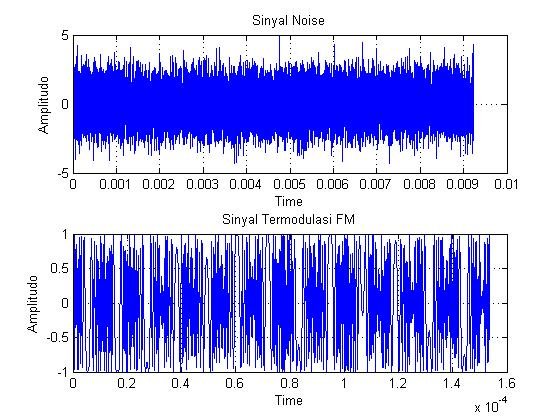
signal noise and modulated signal
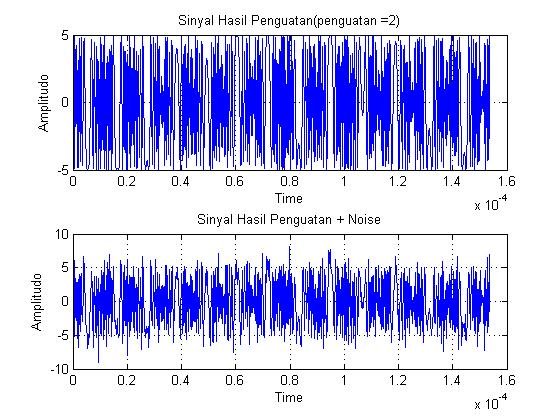
Curriculum
this is my first tutorial about the phone information signal process with Matrix Lab
Posted on Utopian.io - Rewarding Open Source Contributors
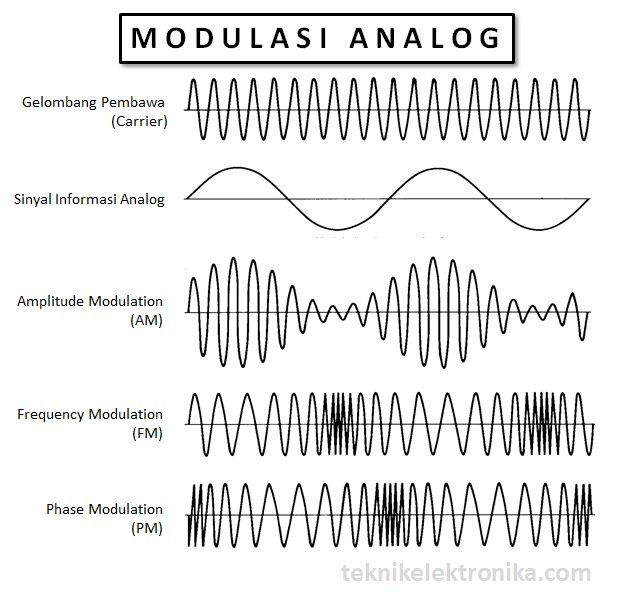
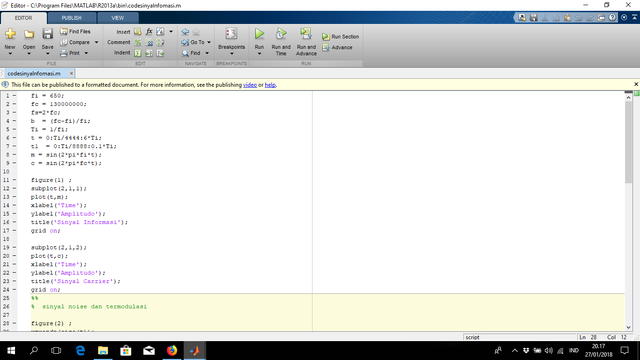
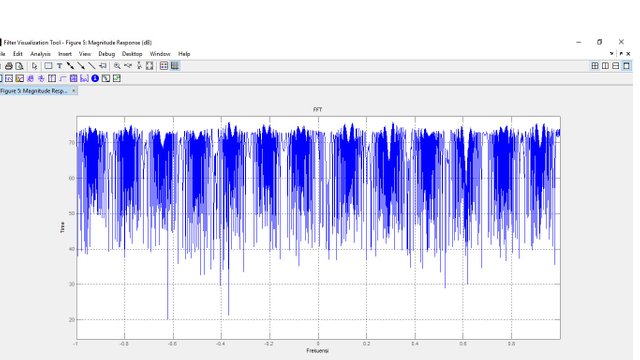
Your contribution cannot be approved because it does not refer to or relate to an open-source repository. See here for a definition of "open-source."
You can contact us on Discord.
[utopian-moderator]
thanks for your information mr @amosbastian. I will make a post in accordance with utopian.io open source.
follow back me @fahmiazhar4698